
I can almost hear the smile playing on Mr NQN's lips as he sends me the message about arriving in Cusco. "You need to slow down". As my very laid back husband, he often watches me dash around trying to fit double the amount of things in a short amount of time.
But in Cusco, slow down you must.
Many people visit Peru visit to see Machu Picchu (meaning "old mountain") and it is a bucket list item for many, myself included. Like Fight Club there are rules when dealing with landing in Cusco and the high altitude of 3,500 metres. As soon as you arrive you need to descend as soon as possible. That means for our group we are headed towards the Sacred Valley at 2871 metres just slightly above what we had in Arequipa.

Altitude is one of those things that you shouldn't trifle with because it can lash back at you in a severe way and it has been been know to be fatal in some cases. Tourists are told that they absolutely must not drink alcohol or smoke or eat guinea pig on the first day. At this altitude the digestion is slower and eating rich foods like guinea pig or pork when you arrive is a bad idea. Altitude affects everyone differently regardless of fitness levels and it takes around 2 days to acclimatise. So for the first day you need to take it very, very easy.

My guide palms me a handful of coca sweets. Coca leaves are used to alleviate symptoms of altitude sickness and they really do work although their effects aren't long lasting. They're often ingested as coca tea (mate de coco) or sweets. When you do eat they encourage you to eat small amounts but the small amounts should be starches like pasta and potatoes or chocolate. For me I feel a few beats off and then suddenly a massive headache comes on and I need to unwrap one of those sweets and pop it in my mouth for immediate relief. It can also manifest itself in tiredness, rapid heart breath, trouble breathing, nausea and drowsiness so people are encouraged to walk slowly on their first couple of days.

Cusco and the surrounding areas of the Sacred Valley, Urubamba and Machu Picchu are rich for their Incan ruins. The Incan empire spread across six countries but it is believed that the capital of it across all of these countries was in Peru.

Our first stop during our descent is Pisac Market, a small picturesque town. The main reason for our stop however is food related. My guide buys Choclo, an enormous white corn cob which they season with salt and then top with slices of squeaky, soft cheese.

You pick off each kernel and eat it piece by piece. It's slightly sweet and juicy and the texture of each kernel is firmer than corn we might be familiar with.

But our main stop is to see baker Eulogio from an ancient colonial bakery. He bears a wide grin and a ready thumbs up. He is the village baker and his oven was built in 1575. He pulls out a warm empanada made with tomato, cheese and onion. Heavenly.
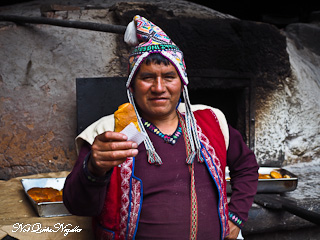
We also try the chicken and beef empanadas and a rectangular piece of his double layered spiced apple pie. We stop by a guinea pig house where they are kept before they become someone's dinner.

Guinea pig is a traditional protein source that is also free of cholesterol. It's quite a rich meat and there is a nearby restaurant street devoted to selling guinea pig complete with cartoonish signs showing guinea pigs with funny facial expressions.

But we are headed somewhere else for lunch. Down what looks like a nondescript rubbly dirt road in Taray we drive past fields to arrive at Hacienda Sarapampa. It is a third generation farm that grows giant white corn for the export market to the US and Japan for corn snacks. Joseph and Maria del Pilar Sales also host lunches and for our group they are having us in their private home with a beautiful view of the terraced Andes mountains above.

Joseph's sister Yasmin Sumar is the talented chef who has created our 7 course lunch using the best local and home grown produce. The recipes that she uses are based on her late grandmother's treasured recipes but she presents them beautifully.

We start the experience with Joseph showing us the corn that they grow-they finished their harvest 2 weeks ago and the corn is now drying. Then he leads us into a dark building where I hear faint squeaking.

This is to show people how guinea pigs are traditionally kept. He feeds them some grass and then we move into the tiny corn museum with examples of ancient corn varieties including one that is 500 years old. Many of them are no bigger than the size of baby corn.
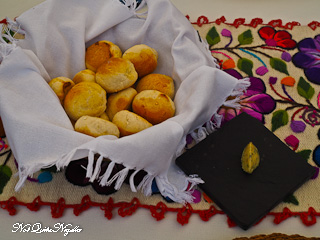

We take a seat on the terrace and start with tiny corn bread and oregano butter. Then we move onto a salad with fresh dandelion leaves, thinly shaved zucchini, aguaymanto or Peruvian ground cherries (also known as physalis) with sweet cherry tomatoes and a sauco brazil nut dressing. The flavours are sweet balanced with piquancy and it's a lovely starter.

One of my favourite dishes is the yellow stuffed pepper filled with white and black quinoa and garnished with shaved Andean cheese. It's perfectly seasoned and there's just enough cheese so that it isn't too rich and heavy. In fact it's quite light. Which brings us to the subject of food in Andes. They explain that most people eat their main meal at lunch because digestion is slower this high up. Sometimes they just drink tea and have cookies for dinner (another idea I can get behind!). This helps them sleep. Although people that live in these areas are acclimatised, once they leave they have to start the acclimatisation process again.

The main is an alpaca tenderloin with tiny, powdery but flavourful native potatoes and a divine creole sauce dressing. Alpaca is a meat that is low in fat so it is better for you and it is also cholesterol free.

And for dessert? Of course there is corn! It's a divine white corn ice cream with a poached tamarillo. We bid Jasmine, Maria and Joseph and their motley crew of dogs goodbye.

I keep forgetting to move slowly until my body tells me via a throbbing headache. The altitude is getting the better of me and I quickly suck on another coca sweet. Another must do on the first night in the Andes is to rest and ideally skip dinner. The altitude actually suppresses the appetite so it's not as hard as it sounds (well for me it sounds terrible to skip a meal!). And in terms of hotels, the idea is to visit high but sleep low.

Which brings me to the hotel that we have chosen for our September tour: the Tambo Del Inka The Luxury Collection in Urubamba. Meaning "Resting place of the gods" it defines luxury but in a large hotel. While we usually focus on special, boutique hotels I couldn't pass up the chance to stay here.

It's also the perfect place to stay in. The deluxe rooms are beautifully spacious and have a picturesque outdoor area. The bed is like sleeping on a cloud and it looks so welcoming with warm lights-just the ticket for people like me who are operating at 50% power. There is a comfortable lounge with plush cushions and a sizeable work desk. There is also a good sized luggage and dressing room too.

The bathroom has twin sinks and Gilchrist and Soames toiletries. There is a separate bath and shower with two shower heads and the toilet and bidet are in a separate room.
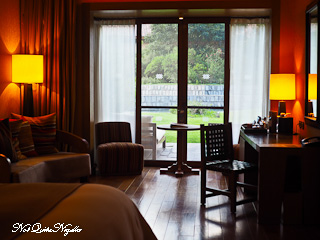
Outside is the garden area with chairs and a table. It is a glamorous luxe hotel where nothing is ever too much trouble and all you need is press the express service button on the phone.

They even bring me a kettle and cup for my many cups of coca tea. And for a hotel of this grade, surprisingly room service is reasonably priced. I sleep like a baby which is just what I need to overcome this altitude sickness.

I wake up the next morning, stomach growling and remember the breakfast slip I had placed on my door the night before. At the exact time they knock and in they glide with a trolley laden with my breakfast of quinoa pancakes with berry sauce, a comprehensive pastry basket, butter, jams, tea, papaya juice and fruit salad. I still think that there's nothing better than eating in your bathrobe in the morning.

The morning is also the best time to catch the Moray, a series of circles that the Incans created.

The Incans had a talent for agriculture and they used each level to test out different crops to see what would work best at certain elevations.

Even a small gredient difference seen at Moray was said to make a difference! When the Spanish invaded they mistakenly thought that the circles were an amphitheatre but the Incans were already doing research on agriculture.
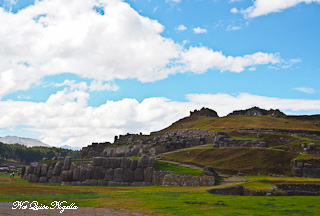
On the way back up we reach Sacasayhuman, a dry stone fortress constructed of enormous rocks piled on each other without any mortar. I marvel at it when see the sheer size of the rocks and how perfectly they've constructed these in order to withstand the earthquakes.

It was built as a tribute to the sun god and the largest rocks weigh up to 130 kilos each. You can also climb up to the top or stay down and pat the grazing alpaca that contently munch grass.
So tell me Dear Reader, have you ever experienced high altitude and altitude sickness? What's your best strategy? Do you ever skip meals? And what speed do you operate at?

Our September Experiential Traveller tour is now sold out! If you couldn't make it in September but still want to book a tour, you can also book this tour and explore Peru yourselves with luxe hotels and all transfers included. Just send us an email on info@experientialtraveller.com or on the website for a quote. OR come and join us on our upcoming tour of Tasmania! Take a look at the Tasmanian tour here.
All meals and accommodation were paid for independently.

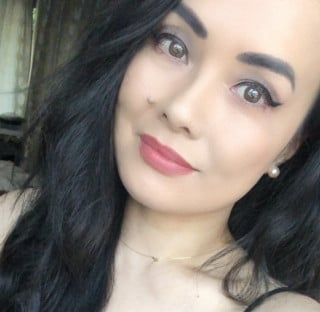


Reader Comments
Loading comments...Add Comment